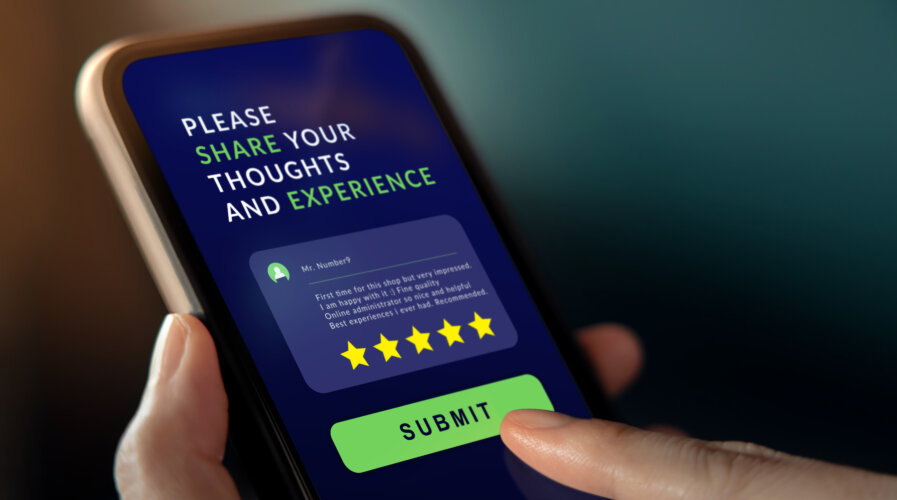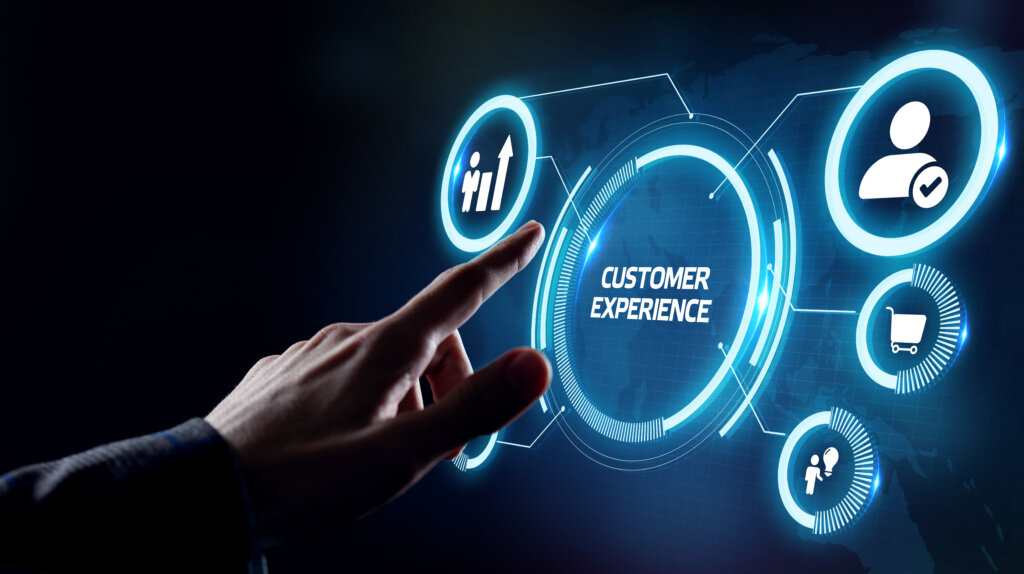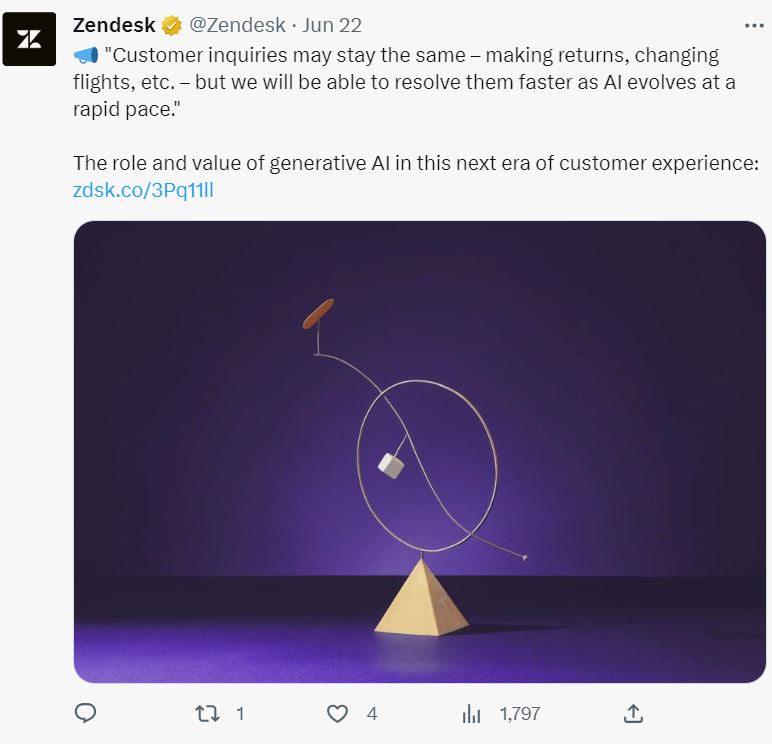
Customer experience platforms need to involve improving both customer and employee experience.
Here are 12 customer experience platforms for SMEs
|
Getting your Trinity Audio player ready... |
Customer experience platforms (CXPs) are essential for organizations today, especially in helping them understand customers better. Gone are the days when businesses could just rely on their regular customers to remain profitable.
Since the COVID-19 pandemic, the entire customer experience has evolved. Organizations need to have a platform that can deliver seamless, personalized, and consistent experiences to customers throughout their journey with a brand.
In fact, customer experience is at the forefront of business priorities as organizations seek to understand and relate to what the customer is going through. According to IDC’s 2022 Future Enterprise Resiliency and Spending (FERS) Survey, Asia Pacific organizations prioritized customer satisfaction on an almost equal footing with operational efficiency as the number one priority.
CXPs typically integrate various tools, technologies, and data sources to gather customer insights, automate processes, and facilitate interactions. They enable businesses to understand customer behavior, preferences, and needs, enabling them to deliver targeted and relevant experiences.
The IDC FutureScape : Worldwide Future of Customer Experience 2023 Predictions – Asia/Pacific excluding Japan ( APeJ ) Implications states that CXPs investments with capabilities such as a strong foundation of customer data, artificial intelligence (AI) and machine learning (ML), and zero-trust architectures will be key areas of focus for customer experience executives. Future customer experiences will be built on the back of customer data to elevate context, deliver immersive experiences, and create real-time value for the customer.
“With macroeconomic uncertainty affecting both B2B and B2C customers, it has become imperative for organizations to empathize, contextualize, and deliver immersive customer experiences to come out ahead. By leveraging tools such as Customer Data Platforms (CDP) for a unified view of customer data to act upon, AI/ML to elevate context, and Web3 technologies to create new immersive experiences, organizations will be able to create new customer engagement models, creating value for both customer and business outcomes in this new era of CX innovation,” said Seng Keong Low, Research Director, CX and Digital Native Business, IDC Asia/Pacific.
Some of the key features and capabilities commonly found in customer experience platforms include:
- Multichannel Engagement
- Customer Data Management
- Personalization and Recommendation Engines
- Journey Mapping and Automation
- Analytics and Insights
- Social Listening and Sentiment Analysis
- Collaboration and Workflow
While large enterprises shouldn’t have a problem investing in CXPs, it may not be the same for SMEs. Given the shortage of tech talent as well as funding challenges, investing in the right customer experience platforms delivers business needs and helps to better understand customers.
It is also important to note that customer experience will improve if the employee experience is perfected as well. Organizations choosing to invest just in CXPs but not improving the employee experience may only find themselves ending up with a mismatch of technology.
For example, the employee experience for customer service agents in call centers needs to be at its best so that they are not disrupted during calls with customers. This can also be applied to replying to customer queries on social media and chatboxes.

Cloud technology tops the list of solutions that will reshape future customer experience capabilities.
Both customers and employees want the best experience
The 2023 Global Customer Experience Report by NTT found that the majority of CEOs agree that improvements in customer experience (92%) and employee experience (91%) will directly affect their net profit. Over 80% of organizations agree that both customer and employee experiences are currently a weak link for them, leading to a negative impact on their business.
The data reveals that top-performing organizations are almost twice as likely than others to be in an advanced state of digitalization. Cloud-based technologies and AI, automation and machine learning feature prominently in these top performers’ customer and employee experience strategies.
Key findings from the global report also indicate that cloud technology tops the list of solutions that will reshape future customer experience capabilities, ranked ahead of AI and predictive analytics. Interestingly, only 60% of organizations say their customer experience strategy is fully aligned with their business strategy, and 44% report full alignment for their employee experience strategy (compared with 74% and 58% of top performers, respectively).
The report also highlighted that over two-thirds (69%) of customer experience interactions will still require some form of human support in the near future, emphasizing the importance of providing employees with the right tools and knowledge – no matter where they work.
“Over the last few years, we have witnessed an increasing link between customer and employee experience, and the need for them to be addressed through technology. Our data shows that companies that invest in technologies to improve customer experience and employee experience are significantly more likely to stay ahead of the curve, not just in financials but also in customer and employee satisfaction,” commented Amit Dhingra, Executive Vice President, Managed Network and Collaboration Services at NTT Ltd.
Picking the right customer experience platform
One big challenge businesses are facing is a mismatch of technology when trying to improve the customer experience. Businesses, especially SMEs need to understand the tools they are investing in and how they can benefit their company when communicating with customers.
To help businesses pick the right customer experience platforms, Tech Wire Asia has prepared a list of a dozen CXPs that SMEs can consider investing in. Each of these CXPs specializes in improving the customer experience through personalization, integration and employee experience.
Freshdesk by Freshworks
Freshdesk helps businesses get everything they need to quickly resolve small issues, or effectively manage complex resolutions that span different teams and time. Whether it’s managing tickets, automating workflows, or engaging with customers in real time, Freshdesk provides the tools and flexibility to meet the evolving demands of modern customer service.
Genesys
For businesses wanting to move on from traditional phone systems, Genesys enables them to respond in real-time via their website, social media channels and live chat. The modern customer prefers interacting this way and having cross-channel support is crucial. Organizations can create improved customer and agent experiences that effortlessly blend automated and human resources.
Qualtrics XM Platform
The Qualtrics XM Platform is an experience management platform that can automatically surface any friction across all touchpoints and guide frontline teams at the moment to better serve customers. Businesses can bring data together from across the organization, and automatically update records in third-party applications — all from a single system of record.
RingCentral
When it comes to customer experience in call centers, the employee experience matters as well. 74% of agents toggle between applications to reach a customer resolution daily, which wastes up to 60 minutes a day. Cloud contact centers can solve problems like this. Check out this podcast as well.
CirrusResponse
Fueled by ChatGPT tech, the AI-powered solution takes performance up a notch to help businesses conquer customer experience. Be it phone calls, chats, or social media, Cirrus integrates smoothly with workflows, making life easy for customers and agents alike. Keep an eye on this space for a podcast coming soon.
Hiver
As the world’s first customer service software built for Google Workspace users, Hiver enables businesses to provide support through multiple channels like email, live chat, voice, and Whatsapp. Along with this, it also provides organizations with powerful features like automation, analytics, SLAs, CSAT surveys, and more.
Zendesk
Zendesk offers flexible, powerful tools that can scale and meet business needs, regardless of their size and industry. By connecting data sources into a single platform, Zendesk enables team members in customer service to get the correct customer contact information when they call for support. Their full suite of tools can fit all business needs with a customized solution to fit the current support environment. These tools include automated AI-powered answers during chat sessions, help centers, self-service portals, and customer support through voice, e-mail, SMS, and live chat.

A Tweet by Zendesk unveiling generative AI solutions to improve customer experience.
PartnerHero
PartnerHero matches exceptional individuals with companies to create customer experiences that feel in-house, not outsourced. Their teams are designed to help businesses scale without sacrificing quality or efficiency. Watch this space for an article explaining why they feel the quality of employees will lead to better customer experiences.
Crimtan
Crimtan focuses on helping businesses understand the customer lifecycle journey when it comes to customer experience. The company’s comprehensive platform seamlessly combines multi-channel capabilities, data integration, and dynamic creatives, enabling brands to run programmatic advertising campaigns with a single trusted partner instead of multiple vendors. As a UK-founded company, Crimtan navigated and prioritized GDPR compliance and addressed the imminent challenges of a cookie-less world, they developed ActiveID, an innovative solution designed to ensure clients are future-proofed.
Cinnox
Cinnox is a total experience SaaS platform dedicated and committed to driving innovation within customer experience, which is reflected in its name (C-INNO-X). The 100% Asia-born company has its sights on serving the Asia Pacific region. The Cinnox platform connects by unifying all telephony and digital channels with full customer context and seamless transition between each of these, to focus responses. For example, a customer can begin by chatting with an agent on WhatsApp, then switch to talking with the agent on the phone or even a video conference to resolve a more complex inquiry.
Zoho Desk
Zoho Desk helps service teams manage customer conversations across email, phone, live chat, and social media. It is designed to pack the automation and analytics necessary to scale to any volume of customers. For SMEs, Zoho offers a fully-featured free edition of its flagship CRM software. At the same time, its ease of use makes it an ideal pick for startups and small businesses that need client and contact management, along with sales forecasting and marketing automation features.
Zingtree
Zingtree allows customer service agents to create workflows with no code required. Businesses can also auto-pull data from CRMs and contact center systems through native integrations. Agents will also be empowered with bite-sized, step-by-step answers to queries and also have auto-trigger actions like sending emails, SMS, PDFs and more.
In conclusion, when picking customer experience platforms, businesses need to be sure of how they can make the most of the tools to enhance their business. They also need to understand that the employee experience is key to enhancing the customer experience.
READ MORE
- Safer Automation: How Sophic and Firmus Succeeded in Malaysia with MDEC’s Support
- Privilege granted, not gained: Intelligent authorization for enhanced infrastructure productivity
- Low-Code produces the Proof-of-Possibilities
- New Wearables Enable Staff to Work Faster and Safer
- Experts weigh in on Oracle’s departure from adland


